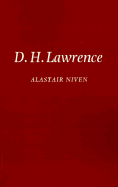5 - The Rainbow and Women in Love
Published online by Cambridge University Press: 04 April 2011
Summary
INTRODUCTORY
In the same letter to Edward Garnett in which he announced his abandonment of the style of Sons and Lovers, Lawrence referred to the new novel on which he was working. He had been engaged on it at least since the beginning of 1913 and had not finally decided upon a title. In his letters he returns many times to The Sisters as a possible name, which suggests that his intention then was to focus the novel on the two girls equally; but he also refers to the new work as The Wedding Ring. The central subject of the book was to be wholeness, wholeness of being and wholeness of society; and the second contemplated title shows how concerned he was to find a central image of completeness. The ring is a circle and a perfect shape; like the rainbow it has its mystery. For the new novel was, he told Garnett, to be ‘very different from Sons and Lovers: written in another language almost’. This other language he is generally thought to have mastered; for the two novels The Rainbow and Women in Love, which he originally conceived as one, are the core of his achievement and the work by which he is always likely finally to be judged.
Lawrence married Frieda weekley on 13 July 1914 and war against Germany broke out less than a month later. Frieda, who left her English professor husband and her three children to live with Lawrence, was a German baroness of the von Richthofen family.
- Type
- Chapter
- Information
- D. H. LawrenceThe Novels, pp. 59 - 113Publisher: Cambridge University PressPrint publication year: 1978

